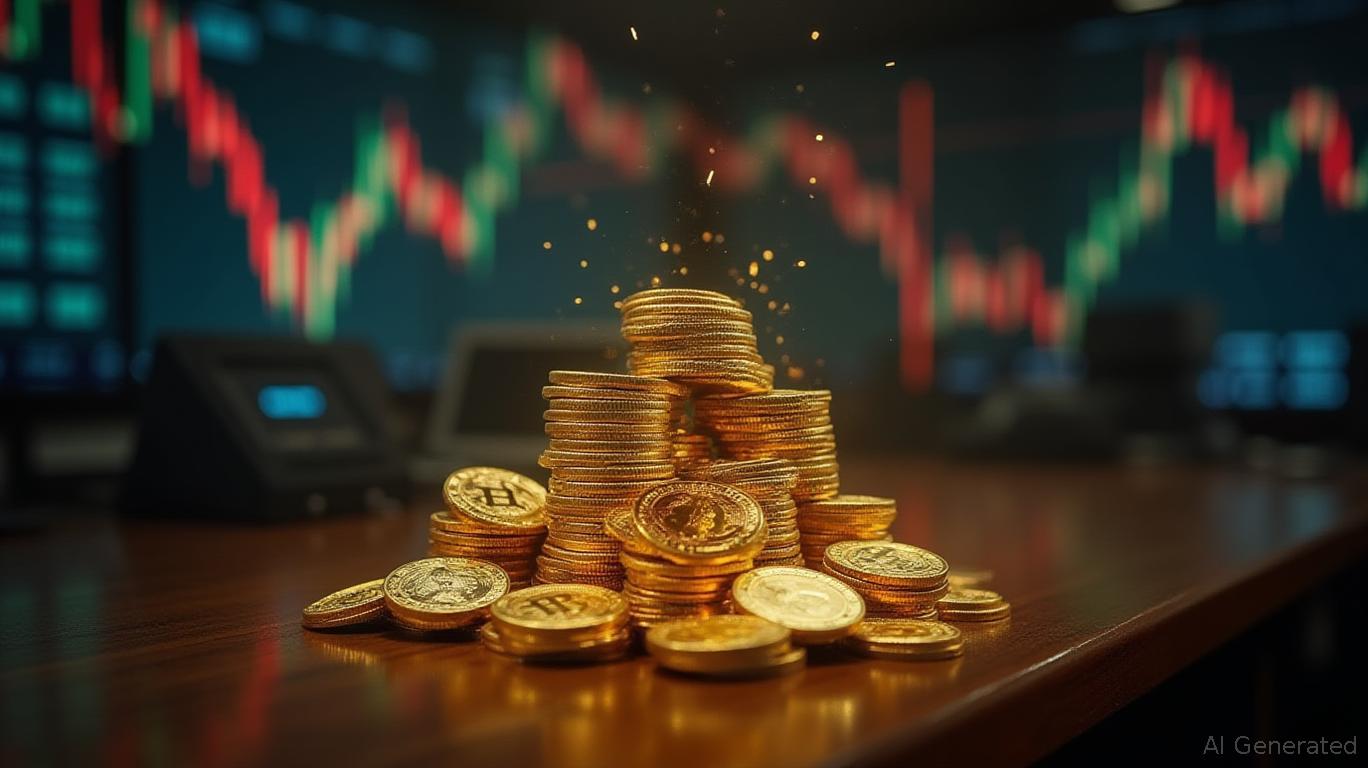Bitcoin Updates: Cryptocurrency Markets Surge Following U.S.-China Trade Ceasefire, Yet Uncertainty Surrounds the Delicate Agreement
- U.S.-China trade framework delays China's rare earth export controls and secures soybean purchases, averting 100% tariffs and boosting crypto markets. - Bitcoin surged 3.5% to $115,235 while the crypto market hit $3.92 trillion, reversing Trump's tariff-driven losses as geopolitical risks ease. - Analysts highlight potential BTC/ETH gains from Fed rate cut expectations but warn of volatility if the fragile trade deal falters at the upcoming Trump-Xi summit. - Institutional investors poured $446M into U.S
This week, the United States and China established an initial trade agreement, alleviating concerns over global supply chains and fueling a surge in the cryptocurrency sector.

This easing of trade tensions has increased investor risk appetite, sending Bitcoin above $113,000 for the first time in ten days and
However, the stability of the agreement is still uncertain. The upcoming Trump-Xi meeting in South Korea is seen as crucial, with analysts warning that a breakdown could bring renewed market instability, according to
From a technical perspective, Bitcoin faces resistance at $117,600; surpassing this level could drive
These trade negotiations are also intertwined with larger economic trends. The Federal Reserve’s meeting on October 29 is approaching, with markets almost certain of a 25-basis-point rate cut. Easing tensions between the U.S. and China could further boost liquidity-driven rallies in risk assets, including cryptocurrencies. Nevertheless, Congress has cautioned Trump against loosening export restrictions on advanced AI chips such as Nvidia’s Blackwell, citing concerns over potential military use by China, as reported in
While optimism is growing, obstacles remain. The upcoming APEC summit in November will be a key test for the trade agreement’s resilience, and unresolved geopolitical issues—like China’s rare earth export policies—continue to pose risks. For now, traders are betting on continued stability, with Bitcoin holding above $113,500 and altcoins such as Hyperliquid (HYPE) jumping 14.6%, according to
Disclaimer: The content of this article solely reflects the author's opinion and does not represent the platform in any capacity. This article is not intended to serve as a reference for making investment decisions.
You may also like
Bitcoin Latest Updates: Investors Shift Away from Gold Amid Improved Trade Relations, Risk Appetite Rises While Bitcoin ETFs Lag Behind
- Gold fell below $4,000 as U.S.-China trade tensions eased, reducing demand for safe-haven assets after a framework agreement in Malaysia. - Bitcoin dropped 3.5% to $108,000 but rebounded near $115,000, while ETF inflows lagged behind gold's outflows amid divergent investor behavior. - JPMorgan forecasts gold to average $5,055 by 2026, while Bitcoin's ETF inflows and ETF market momentum show uneven growth despite regulatory challenges. - Technical analysis shows gold's bearish RSI and Bitcoin's $115,000 s

Breaking Down Barriers in Blockchain: Brevis Handles 130 Million zk Proofs Each Month
- Brevis, a Web3 platform, processes 130M monthly zero-knowledge proofs via its zk coprocessor network, addressing blockchain scalability and interoperability challenges. - Its architecture offloads computation off-chain while verifying on-chain, reducing gas costs and enabling cross-ecosystem trustless logic through "chain fence" elimination. - With 97K+ users, 30+ global partners, and optimized parallel processing, Brevis aims to establish a foundational zk data layer for real-time smart contract verific

AI's Dilemma in Education: Revolutionizing Learning or Widening Gaps?

Tech Industry Relieved as U.S.-China Agreement Temporarily Halts Rare Earth Export Restrictions
- U.S. and China agree to a one-year trade framework suspending key tariffs and rare earth export controls to ease tensions. - The deal avoids a 100% U.S. tariff on Chinese goods and delays China's rare earth restrictions critical to tech and defense sectors. - China resumes soybean purchases, benefiting U.S. farmers, while U.S. reduces fentanyl-related tariffs from 20% to 10%. - Success hinges on China's enforcement of rare earth policies and U.S. adherence to export controls, per analysts.
